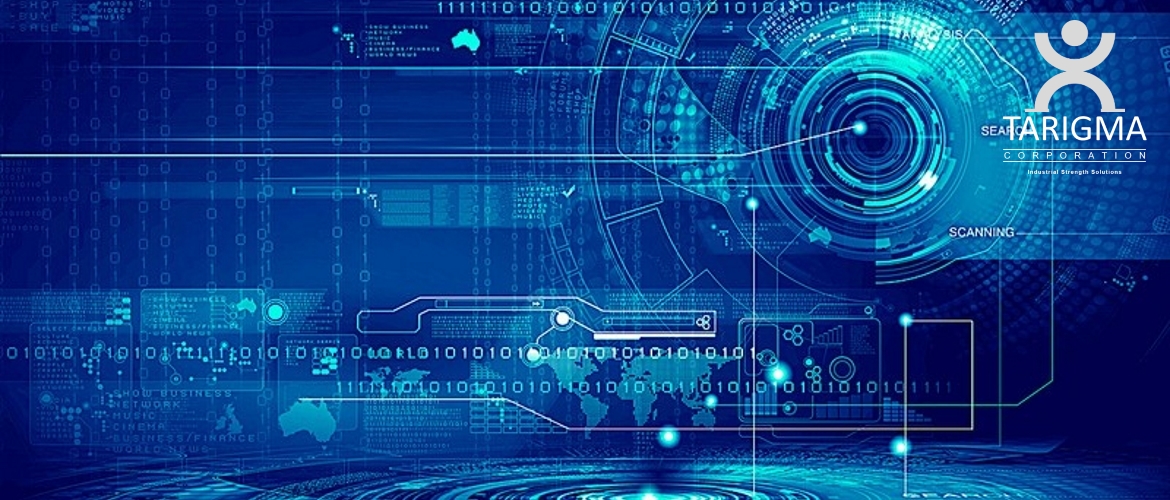
Technology & Architecture
Tarigma software applications implement the distributed network reference architecture known as Fog Computing. Fog computing is a term created by Cisco and The OpenFog Consortium that refers to distributing cloud computing to the “edge” of the enterprise. Also known as edge computing or fogging, fog computing facilitates the distribution of computing, storage, and networking services between edge devices and cloud computing data centers. By moving the collection and conversion of raw data to actionable information closer to the data sources, we minimize the latency between critical events and required responses, all while reducing the network load and consumption of bandwidth. Fog Computing has emerged in direct response to the exponential growth of three technologies: IIoT, 5G and AI.
- The Industrial Internet of Things (IIoT) is the pervasive deployment of intelligent
sensors, actuators and devices across the enterprise to provide accurate, timely, and actionable
information to all levels of the enterprise value chain, from the stock room to the board room
to the living room. Industry analysts forecast the IIoT device count will double every four
years, from 10 billion in 2020 to 20 billion in 2024.
- Fifth Generation (5G) wireless telecommunications is arriving just in time. With the
promise of 20 times the bandwith of LTE (4G) and network latency of less than a millisecond, 5G
will bring fiberoptic-like network performance to the airwaves and to everywhere.
- And then there is Artificial Intelligence (AI), the big number-crunching technology that promises to tease clever, unforeseen, and unforeseeable observations from the sea of data bubbling through the ether. From cars that meet you at the door and take you to your destination, to commodities that replenish themselves on grocery shelves, to watches that collaborate with your physician to keep you healthy, AI will crunch all of the data that IIoT and 5G can deliver . . . and change everything.
The Manufacturing and Energy Management Industries that Tarigma serves are being impacted by all three of these trends:
Manufacturers, seeking to improve their use of labor and capital in the pursuit of happy customers and profits, are moving their business models from make-to-stock to make-to-order. Suppliers monitor order flow and vendor-managed inventory for just-in-time delivery to the process or assembly line. Smart sensors measure quality and specs of incoming raw materials, work-in-process, and finished goods alike. The flow of all materials and processes is tracked from supplier to customer by serial and lot number while cloud-based neural networks look for sources of quality defects, production bottlenecks, and shifts in consumer demand.
Meanwhile, Energy Management Utilities whose revenues and expenditures are managed by a bureaucratic regulatory framework are not immune to these advances in technology. In fact, there may be no better use case for the intersection of these three technologies than the Smart Grid initiatives washing over Electric Utilities. As IIoT smart meters are rolled out to homes and businesses and smart sensors monitor generation, transmission and distribution at every stage of the grid, outages can be accurately pinpointed and rapidly resolved with a huge improvement in service availability and reduction in maintenance costs. Likewise, IIoT smart switches, augmented by battery and other energy storage technologies, enable time-shifting to level peak demand and delay the capital costs of building out new generation. Cloud-based deep-learning applications use this vast data resource to predict equipment failures before the fact to support “preventative” and condition-based maintenance programs. But as distributed network technologies are pushed to the very edge of the smart grid, their vulnerability to cyber-attacks and threats increases.
Hence, the just-in-time arrival of Fog Computing to:
- Move data collection and conversion as close to the source as possible, thereby eliminating latency in detecting and reporting critical events, while moving these vast amounts of data from the edge to the cloud with the most efficient use of bandwidth,
- Embed and align distributed computing and storage within a hardened, end-to-end security infrastructure that can be centrally managed, and,
- Promote the utilization of neural networks and other advanced analytics to bring accurate, timely, and inciteful information to decision-makers at all levels of the enterprise.